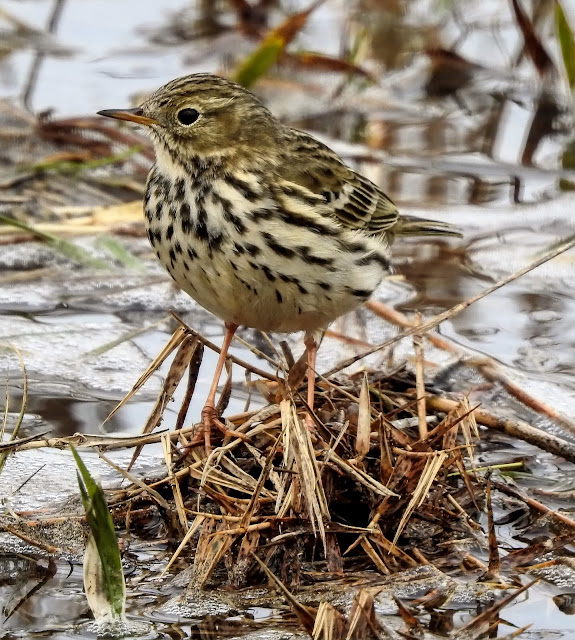This Blog contains Wildlife and Bird Photos from Walks, Safaris, Birding Trips and Vacations. Most of the pictures have been taken with my Nikon P900 and P950X cameras. On the right of the page are labels for each species of Bird/Animal etc. Click on a label and it will show all of the photos taken for that species. I am adding information for each species from sources like Wikipedia. To see any pictures at a large size just click on the image.
TOTAL PAGEVIEWS
TRANSLATE
Saturday 1 February 2020
28-11-2016 JURONG, SINGAPORE - YELLOW HEADED PARROT (Amazona oratrix)
The yellow-headed amazon (Amazona oratrix), also known as the yellow-headed parrot and double yellow-headed amazon, is an endangered amazon parrot of Mexico and northern Central America. Measuring 38–43 centimetres (15–17 in) in length, it is a stocky short-tailed green parrot with a yellow head. It prefers to live in mangrove forests or forests near rivers or other bodies of water. It is sometimes considered a subspecies of the yellow-crowned amazon (Amazona ochrocephala). It is a popular pet and an excellent talker. Poaching for the international pet trade has driven the species to near-extinction in the wild; around half of all wild-caught birds are thought to die in the process.
This species lives in riparian forest and areas with scattered trees, as well as evergreen forest in Belize and mangroves in Guatemala. A notable ecoregion of occurrence is the Belizean pine forests. It occurs singly or in pairs, in small groups, and occasionally in big flocks. The range formerly included both coastal slopes of Mexico from the Tres Marías Islands and Jalisco to Oaxaca and from Nuevo León to northern Chiapas and southwestern Tabasco, as well as a disjunct area including most of Belize, and another comprising a small part of northeastern Guatemala and northwestern Honduras. However, their numbers have been reduced drastically—by 90%, to 7,000, from the mid-1970s to 1994, and by 68% from 1994 to 2004—because of capture for the pet trade and habitat destruction.
Introduced populations can be found in Stuttgart, Germany, where a recent population of over 50 individuals resides. Smaller introduced populations are to be found in coastal neighborhoods of San Diego, California, including Coronado, Ocean Beach, Pacific Beach, Point Loma, La Jolla, and Imperial Beach; they are also found in Santa Ana, Loma Linda and Pasadena, all also in Southern California. In addition, introduced –and apparently breeding– populations have been reported in Puerto Rico.
Friday 31 January 2020
28-11-2016 JURONG, SINGAPORE - EASTERN ROSELLA (Platycercus eximius)
The Eastern rosella (Platycercus eximius) is a colorfull parrot native to Australia and Tasmania. It is sometimes considered a subspecies of the Pale-headed rosella (P. adscitus).
The Eastern rosella has a red head and white cheeks. The beak is white, and the irises are brown. The upper breast is red, and the lower breast is yellow fading to pale green over the abdomen. The feathers of the back and shoulders are black and have yellowish or greenish margins giving rise to a scalloped appearance that varies slightly between the subspecies and the sexes. The wings and lateral tail feathers are bluish while the tail is dark green. The legs are grey. The female is similar to the male though duller in coloration and has an underwing stripe, which is not present in the adult male. Juveniles are duller than females and have an underwing stripe.
Eastern rosellas are found in eastern Australia, including Tasmania. They prefer to live in lightly wooded country, open forests, woodlands, gardens, bushlands, and parks.
Eastern rosellas are diurnal birds usually seen in pairs or in small groups. They mainly feed on the ground and enjoy bathing in puddles of water.
Wednesday 29 January 2020
Tuesday 28 January 2020
Monday 27 January 2020
Sunday 26 January 2020
Friday 24 January 2020
Thursday 23 January 2020
Subscribe to:
Posts (Atom)

















































